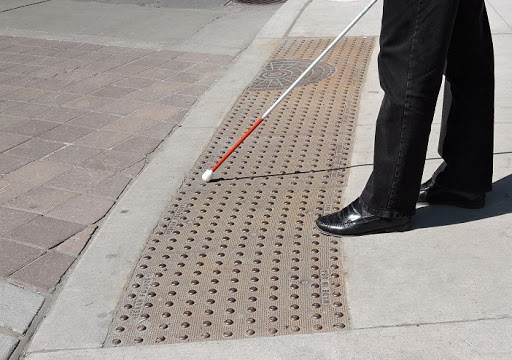Tactile walking surface indicators (TWSIs) are sometimes referred to as detectable warning plates, decision tactiles, or hazard tactiles. Many states and countries have laws regarding TWSIs, such as Ontario which mandates that all curb sidewalks (including all new and repair depressed ones) must have TWSIs.
Where Are TWSIs Installed?
You can find TWSIs on everything from street corners to subway platforms to footpaths, stairwells, and more.
What Is the Purpose of TWSIs?
TWSIs are used to alert people with low or no vision of any hazards in their immediate path. These hazards can come in multiple forms, such as moving traffic. Tactile walking surface indicators suppliers make the indicators available to aid in the navigation of urban environments.
The primary purpose of TWSIs is to serve as a source of directional information that allows those with vision impairments to safely avoid hazards, but the indicators can also help these people identify public access facilities, such as escalators, stairs, intersection curb ramps, lifts, pedestrian crossings, and more. In public transportation facilities, they are often used as alerts for the presence of platform edges at subway and train stations and ferry wharves, as well as those at bus and tram stop areas.
Is There a Difference Between Warning Tactile and Directional Tactile Indicators?
TWSIs are not all one and the same.
Warning/decision tactile indicators are generally installed in a raised grid pattern (appearing as studs or dots) onto a walking surface to indicate the presence of an existing or potential hazard. These types of indicators are generally used to act as a stop sign. When a vision-impaired person takes note of the indicators, this lets them know that they need to stop and only proceed with caution once it has been verified that a hazard is no present. However, it is not made known as to what the hazard is or will be.
Directional tactile indicators, many times called leading tactiles, are installed onto walking surfaces in the form of a series of raised bars. These bars are oriented in a line to highlight a prescribed direction of travel. Much of the time, the leading tactiles are installed to help vision-impaired pedestrians understand which path is free of obstacles. At the end of the path, warning tactiles are usually present to indicate the path has ended or that a hazard lies ahead.
The Takeaway
To learn more about TWSIs, it’s important to contact tactile walking surface indicators suppliers. Suppliers can educate you on the various types of TWSIs available and the ways that they can be used.


